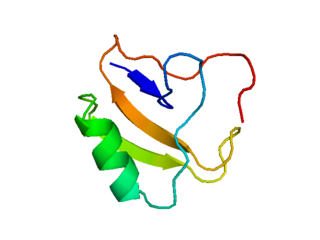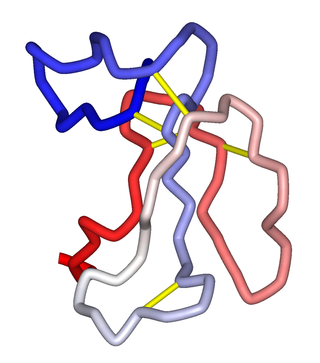
Alkaloids are a class of basic, naturally occurring organic compounds that contain at least one nitrogen atom. This group also includes some related compounds with neutral and even weakly acidic properties. Some synthetic compounds of similar structure may also be termed alkaloids. In addition to carbon, hydrogen and nitrogen, alkaloids may also contain oxygen or sulfur. More rarely still, they may contain elements such as phosphorus, chlorine, and bromine.

Piperidine is an organic compound with the molecular formula (CH2)5NH. This heterocyclic amine consists of a six-membered ring containing five methylene bridges (–CH2–) and one amine bridge (–NH–). It is a colorless liquid with an odor described as objectionable, typical of amines. The name comes from the genus name Piper, which is the Latin word for pepper. Although piperidine is a common organic compound, it is best known as a representative structure element within many pharmaceuticals and alkaloids, such as natural-occurring solenopsins.

Venom or zootoxin is a type of toxin produced by an animal that is actively delivered through a wound by means of a bite, sting, or similar action. The toxin is delivered through a specially evolved venom apparatus, such as fangs or a stinger, in a process called envenomation. Venom is often distinguished from poison, which is a toxin that is passively delivered by being ingested, inhaled, or absorbed through the skin, and toxungen, which is actively transferred to the external surface of another animal via a physical delivery mechanism.
Most ants are capable of biting, stinging, and spraying irritant chemicals. However, only relatively few species can harm humans; among which some can cause significant injury or, in rare cases, death. Like wasps, individual ants are capable of stinging multiple times as they do not lose their stingers.

Fire ants are several species of ants in the genus Solenopsis, which includes over 200 species. Solenopsis are stinging ants, and most of their common names reflect this, for example, ginger ants and tropical fire ants. Many of the names shared by this genus are often used interchangeably to refer to other species of ant, such as the term red ant, mostly because of their similar coloration despite not being in the genus Solenopsis. Both Myrmica rubra and Pogonomyrmex barbatus are common examples of non-Solenopsis ants being termed red ants.

Solenopsis invicta, the fire ant, or red imported fire ant (RIFA), is a species of ant native to South America. A member of the genus Solenopsis in the subfamily Myrmicinae, it was described by Swiss entomologist Felix Santschi as a variant of S. saevissima in 1916. Its current specific name invicta was given to the ant in 1972 as a separate species. However, the variant and species were the same ant, and the name was preserved due to its wide use. Though South American in origin, the red imported fire ant has been accidentally introduced in Australia, New Zealand, several Asian and Caribbean countries, Europe and the United States. The red imported fire ant is polymorphic, as workers appear in different shapes and sizes. The ant's colours are red and somewhat yellowish with a brown or black gaster, but males are completely black. Red imported fire ants are dominant in altered areas and live in a wide variety of habitats. They can be found in rainforests, disturbed areas, deserts, grasslands, alongside roads and buildings, and in electrical equipment. Colonies form large mounds constructed from soil with no visible entrances because foraging tunnels are built and workers emerge far away from the nest.

Epibatidine is a chlorinated alkaloid that is secreted by the Ecuadoran frog Epipedobates anthonyi and poison dart frogs from the Ameerega genus. It was discovered by John W. Daly in 1974, but its structure was not fully elucidated until 1992. Whether epibatidine is the first observed example of a chlorinated alkaloid remains controversial, due to challenges in conclusively identifying the compound from the limited samples collected by Daly. By the time that high-resolution spectrometry was used in 1991, there remained less than one milligram of extract from Daly's samples, raising concerns about possible contamination. Samples from other batches of the same species of frog failed to yield epibatidine.

Poneratoxin is a paralyzing neurotoxic peptide made by the bullet ant Paraponera clavata. It prevents inactivation of voltage gated sodium channels and therefore blocks synaptic transmission in the central nervous system. Specifically, poneratoxin acts on voltage gated sodium channels in skeletal muscle fibers, causing paralysis, and nociceptive fibers, causing pain. It is rated as a 4 plus on the Schmidt sting pain index, the highest possible rating with that system, and its effects can cause waves of pain up to twelve hours after a single sting. It is additionally being studied for its uses in biological insecticides.

Pumiliotoxin 251D is a toxic organic compound. It is found in the skin of poison frogs from the genera Dendrobates, Epipedobates, Minyobates, and Phyllobates and toads from the genus Melanophryniscus. Its name comes from the pumiliotoxin family (PTXs) and its molecular mass of 251 daltons. When the toxin enters the bloodstream through cuts in the skin or by ingestion, it can cause hyperactivity, convulsions, cardiac arrest and ultimately death. It is especially toxic to arthropods, even at low concentrations.

Scorpion toxins are proteins found in the venom of scorpions. Their toxic effect may be mammal- or insect-specific and acts by binding with varying degrees of specificity to members of the Voltage-gated ion channel superfamily; specifically, voltage-gated sodium channels, voltage-gated potassium channels, and Transient Receptor Potential (TRP) channels. The result of this action is to activate or inhibit the action of these channels in the nervous and cardiac organ systems. For instance, α-scorpion toxins MeuNaTxα-12 and MeuNaTxα-13 from Mesobuthus eupeus are neurotoxins that target voltage-gated Na+ channels (Navs), inhibiting fast inactivation. In vivo assays of MeuNaTxα-12 and MeuNaTxα-13 effects on mammalian and insect Navs show differential potency. These recombinants exhibit their preferential affinity for mammalian and insect Na+ channels at the α-like toxins' active site, site 3, in order to inactivate the cell membrane depolarization faster[6]. The varying sensitivity of different Navs to MeuNaTxα-12 and MeuNaTxα-13 may be dependent on the substitution of a conserved Valine residue for a Phenylalanine residue at position 1630 of the LD4:S3-S4 subunit or due to various changes in residues in the LD4:S5-S6 subunit of the Navs. Ultimately, these actions can serve the purpose of warding off predators by causing pain or to subdue predators.

The tawny crazy ant or Rasberry crazy ant, Nylanderia fulva, is an ant originating in South America. Like the longhorn crazy ant, this species is called "crazy ant" because of its quick, unpredictable movements. It is sometimes called the "Rasberry crazy ant" in Texas after the exterminator Tom Rasberry, who noticed that the ants were increasing in numbers in 2002. Scientists have reorganised the genera taxonomy within this clade of ants, and now it is identified as Nylanderia fulva.

Ant venom is any of, or a mixture of, irritants and toxins inflicted by ants. Most ants spray or inject a venom, the main constituent of which is formic acid only in the case of subfamily Formicinae.

Solenopsis saevissima, commonly known in Brazil as formiga de fogo, formiga-vermelha, or formiga-lava-pes, is one of more than 185 species in the genus Solenopsis. It, along with 13 other species, is also a member of the Solenopsis saevissima species group which are popularly known as fire ants.
BmKAEP is a neurotoxin from the venom of the Manchurian scorpion (Mesobuthus martensii). It is a β-toxin, which shift the activation voltage of sodium channels towards more negative potentials.

α-Neurotoxins are a group of neurotoxic peptides found in the venom of snakes in the families Elapidae and Hydrophiidae. They can cause paralysis, respiratory failure, and death. Members of the three-finger toxin protein family, they are antagonists of post-synaptic nicotinic acetylcholine receptors (nAChRs) in the neuromuscular synapse that bind competitively and irreversibly, preventing synaptic acetylcholine (ACh) from opening the ion channel. Over 100 α-neurotoxins have been identified and sequenced.
Euglenophycin is an ichthyotoxic compound isolated from Euglena sanguinea, a protist of the genus Euglena. It exhibits anticancer and herbicidal activity in vitro.
Ichthyotoxins are compounds which are either toxic to fish, or are toxins produced by fish. The former include the algae-produced euglenophycin and prymnesins, which can cause large-scale fish deaths. The latter includes ostracitoxin, produced by boxfish. Many toxin-producing algal species can be found both in marine and fresh water environments when the algae are in bloom. Ichthyotoxic poisoning in humans can cause symptoms ranging in severity dependent on how much toxin was consumed. The symptoms of an ichthyotoxin poisoning from fish venoms can include headache, vomiting, diarrhea, dizziness, and drop in blood pressure.
Hanatoxin is a toxin found in the venom of the Grammostola spatulata tarantula. The toxin is mostly known for inhibiting the activation of voltage-gated potassium channels, most specifically Kv4.2 and Kv2.1, by raising its activation threshold.
A flavonoid alkaloid also known as a flavoalkaloid is a type of natural product produced by plants that contains both a flavonoid core structure and a nitrogen containing substituent so that the substance is also classified as an alkaloid. The most common flavonoid alkaloids contain a nitrogen heterocycle such as a pyridine or piperidine which is covalently bonded to the A-ring of a chromone. One flavonoid alkaloid, lilaline, was isolated from Lilium candidum in 1987. The synthesis of flavonoid alkaloids has been achieved
The toxicology of fire ant venom is relatively well studied. The venom plays a central role in the biology of Red imported fire ants, such as in capturing prey, and in defending itself from competitors, assailants, and diseases. Some 14 million people are stung annually in the United States, suffering reactions that vary from mild discomfort, to pustule formation, swelling, and in rare cases, systemic reactions followed by anaphylactic shock. Fire ant venoms are mainly composed (>95%) of a complex mixture of insoluble alkaloids added to a watery solution of toxic proteins. For the Red imported fire ant Solenopsis invicta Buren there are currently 46 described proteins, of which four are well-characterised as potent allergens.













